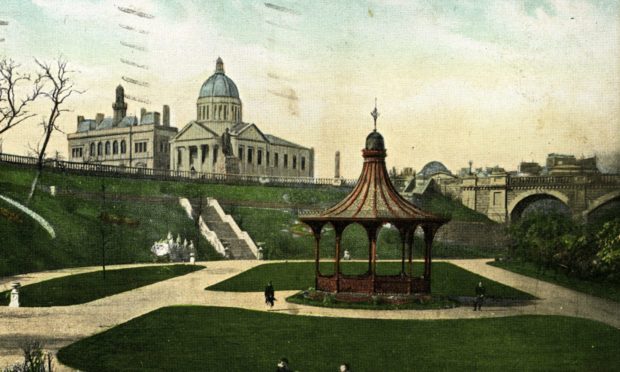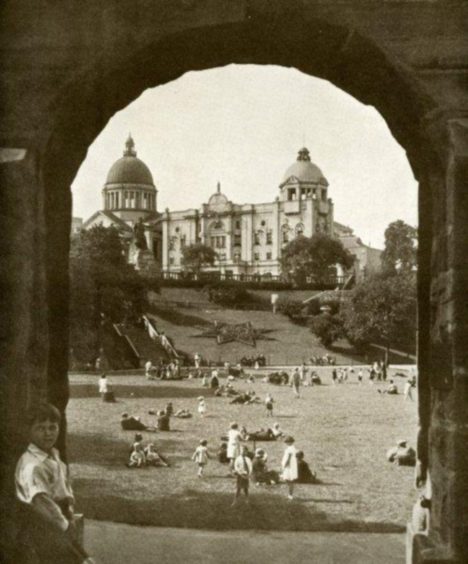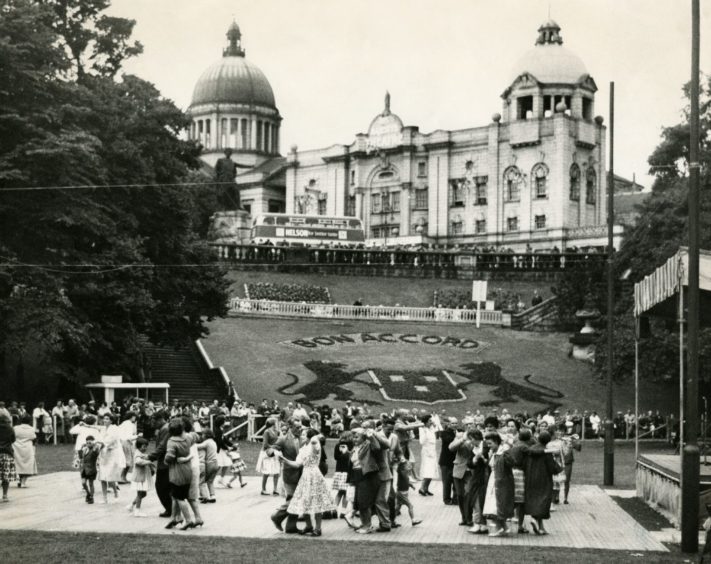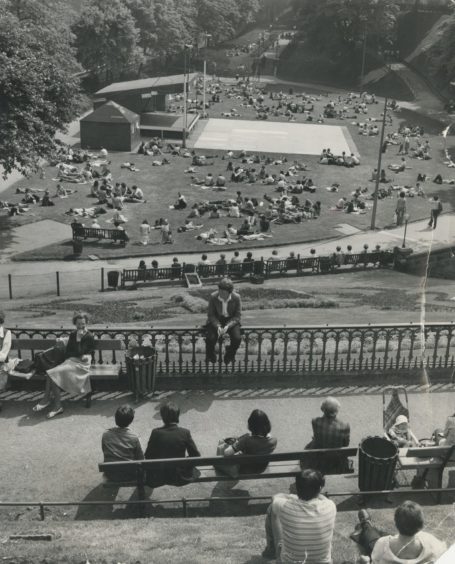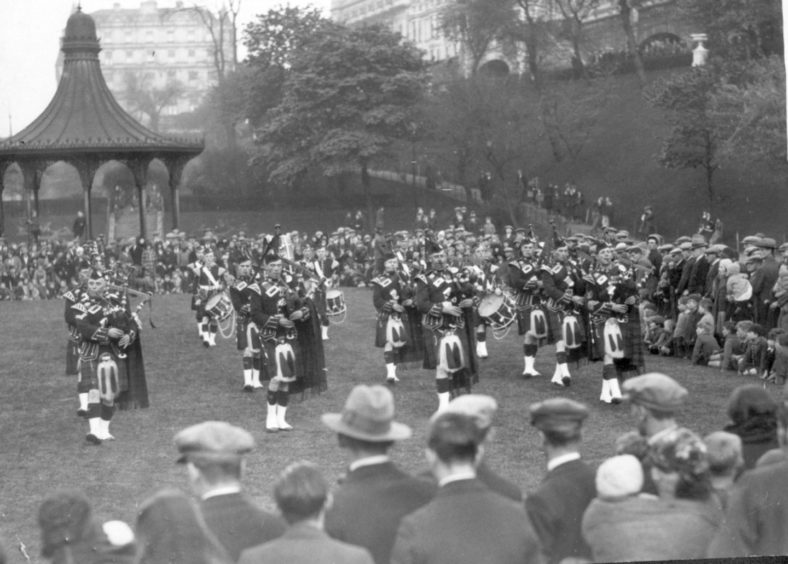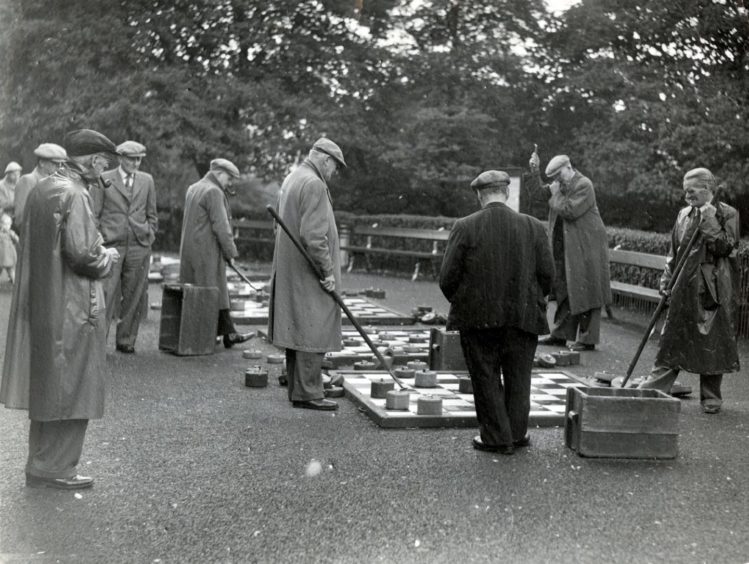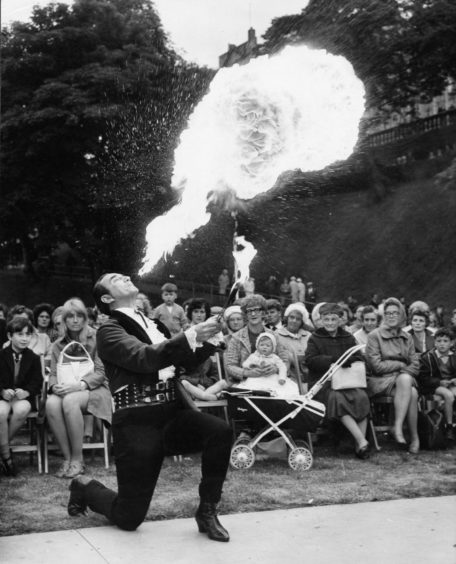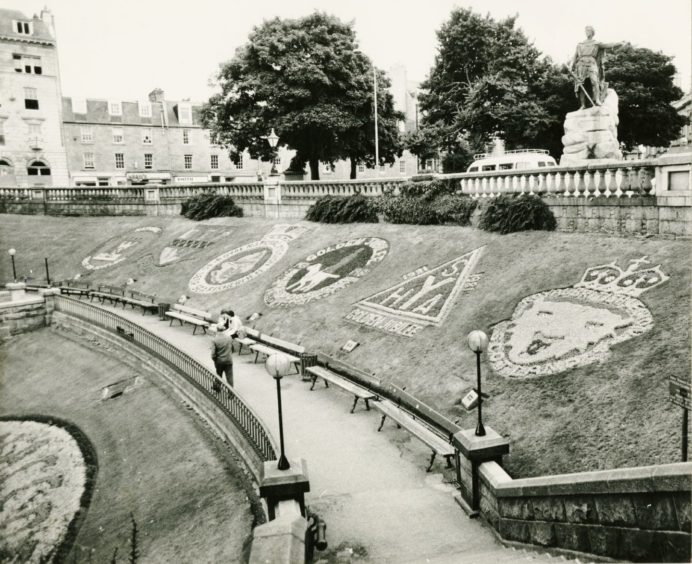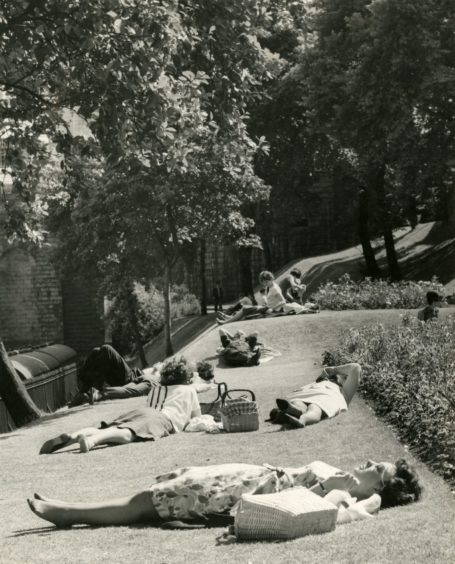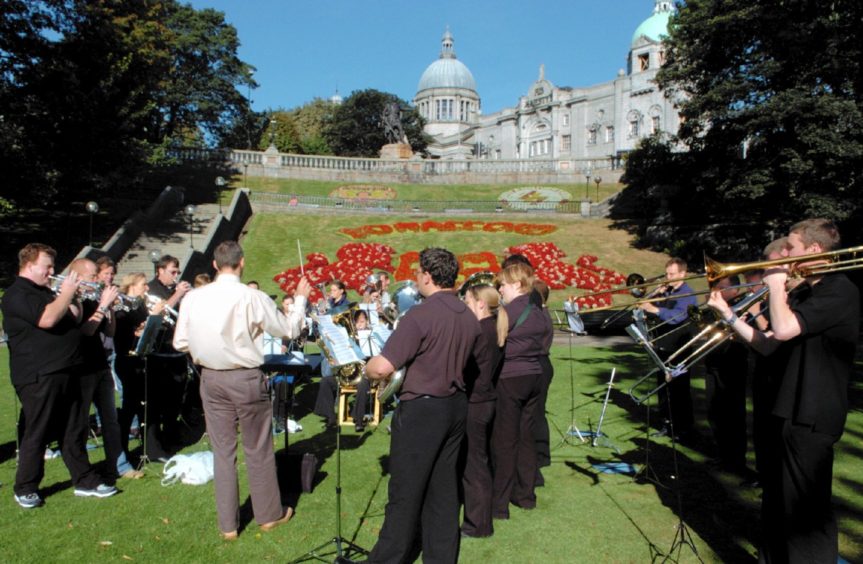The shape of things to come for Union Terrace Gardens has been revealed in photos of work on three new pavilions being built as part of a redevelopment of the treasured green space in the heart of the Granite City.
New images of the work, released earlier this week, give the first concrete clues as to how the new look gardens will appear once the £25.7 million regeneration project is complete.
Once in place, the elevated walkways, new pavilions, events space and play parks will be the latest chapter in the history of Union Terrace Gardens – one which predates its role as a Victorian park.
Sitting in the Denburn Valley, the land was originally known as Corbie Haugh and for much of its history was farmland, then became one of Aberdeen’s “bleaching greens”.
Essentially an outdoor laundry, with water drawn from the Denburn, it was hugely popular up to the late 19th century, even after it was spanned by the elegant bridge forming the backbone of Union Street.
The bleaching green was particularly in demand during February, when people thought the winter sun was purer and stronger than at any other time, adding elbow grease to sunlight, Mother Nature’s detergent.
With the building of Union Terrace in the early 1800s, part of the land became a private “plantation” for tenants of the new homes to walk its tree-lined slopes.
But by the late 1870s this plantation had fallen into disrepair, when the council stepped in to reach an agreement over upkeep that would also see the land used as a “recreation ground for the public”.
In 1872, the town council commissioned architect James Matthews to lay out the Denburn as a public park.
His proposal for a sunken garden came in with a £1,735 price tag and was presented to the council, who promptly sat on the idea.
It wasn’t until four years later the plan was approved, the bleaching greens relocated and work started.
Union Terrace Gardens opened to the people of Aberdeen in 1879 as a place to stroll, relax and enjoy music played from a bandstand.
This started the golden era of Union Terrace Gardens, with regular concerts and a place for the great and the good and the ordinary to mix as they would promenade.
During the 20th century, with Aberdeen growing massively in popularity as a holiday destination from across the UK, the gardens became a magnet in the heart of the city.
There were regular music concerts, dancing, large-scale events and – of course – the iconic draughts boards that are still revered in the memories of many to this day.
However, over the years the popularity of the gardens waned and there were frequent attempts and bids to regenerate them.
This came to a head in 2007 when Peacock Visual Arts proposed an art centre in the gardens to create a cultural quarter with His Majesty’s Theatre and Aberdeen Art Gallery.
The idea attracted widespread support, but in 2008 Sir Ian Wood pledged up to £50 million towards creating a new heart for the city centre with a street level civic square on the site of the gardens.
The project was backed by councillors and an international design competition was held for what was then known as the City Garden Project.
The Granite Web design was selected in 2012 and that March put to a referendum, with the choice between leaving the gardens as they were or embracing the £140 million redevelopment.
In a close run contest, 45,301 voted for change, while 41,175 rejected the notion.
But in August 2012, city councillors narrowly chose by two votes to scrap the City Garden Project idea, opting to improve the gardens instead.
In 2016, the current multi-million pound plans to regenerate the gardens were unveiled and approved two years later and forms part of the council’s city centre masterplan.
Work started last year with hopes it might be completed by early next year, but that may be impacted by the current coronavirus restrictions.
